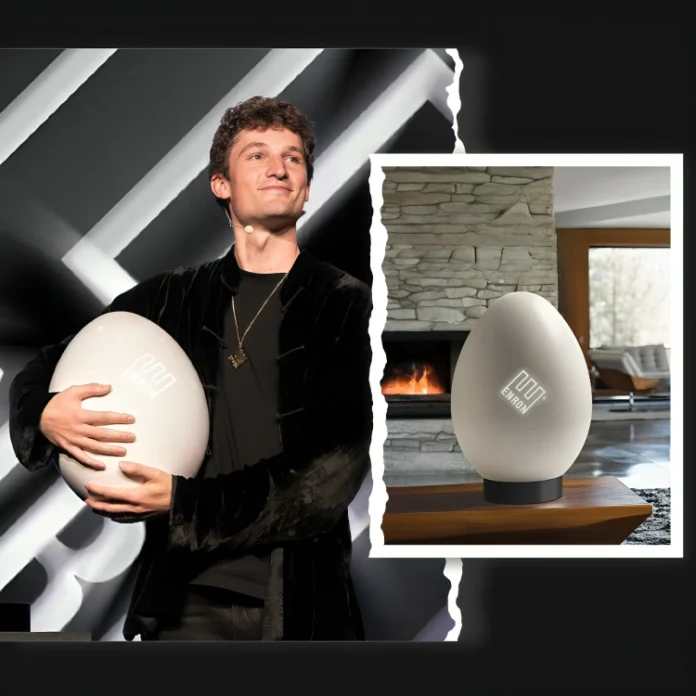Infamous energy giant Enron, once synonymous with scandal, reintroduced itself to the world with a bang on January 6, 2025, unveiling the “Enron Egg.” Enron’s micro miracle was vaunted as a revolutionary micro-nuclear reactor capable of powering a home for ten years without refueling. The tech community was left oscillating between awe and skepticism. If you thought Enron’s story ended with corporate fraud in 2001, think again.
The Enron Egg is impressively technical in its making yet has this unexpected satirical twist. Now, let’s crack it open, so to speak.
Cracking the Tech Behind the Shell
From a technical standpoint, the Enron Egg is billed as nothing short of groundbreaking. Here’s what’s supposedly inside this high-tech nest:
Uranium-Zirconium Hydride (U-ZrH) Fuel Rods: These advanced rods serve as the reactor’s core, using nuclear fission efficiently with little waste.
Inconel 3D-Printed Heat Exchangers: The Egg uses the latest additive manufacturing to make complex-designed heat exchangers that will not flinch under very high temperatures and pressures.
Closed-Loop Cooling System: In this, self-contained cooling becomes assured, leaving minimal environmental risks. Therefore, reactors become suitable even for residential use.
Output: The reactor is designed to supply electricity up to continuous 200-amps, thereby offering power usage needs even from modern power households with the hugest appetites.
If it existed, this tech would be reminiscent of a paradigm shift in home energy.
The Yolk of Satire
But then the kicker: Enron’s website proudly brands the Egg as a “First Amendment-protected parody.” Yes, folks, it’s not a functional reactor but a satirical masterpiece meant to critique tech culture and corporate absurdity.
The pivot to performance art and humor marks a stark departure from Enron’s former persona as a serious corporate titan. The Egg joins a growing list of tech-world spoofs, reminiscent of ThinkGeek’s April Fools’ items or Silicon Valley’s fictional startup Hooli. But this isn’t just a joke; it’s a statement.
A Legacy Scrambled
To fully appreciate the irony, one must go back in time to consider how Enron came about. In the 1990s, the company was hailed as a tech-savvy energy innovator, revolutionizing energy trading through sophisticated online platforms. That very innovation became its house of cards, leading to its catastrophic implosion in 2001.
The Egg becomes a poetic reflection of Enron’s past—a bold claim of innovation with a hidden and now intentionally twisted fiction. This is a rebranding exercise that leans into Enron’s infamous history rather than shying away from it.
Eggonomics: affordable energy or rotten deal?
Advertisements for the Egg tout its affordability and its partnerships with FEMA in disaster relief. Parody, of course, but some very clever riffs on real-world developments:
Tesla’s Powerwall: Unlike the Egg, Tesla‘s home battery is real, scalable, and sustainable, though it relies on solar energy, not nuclear fission.
Small Modular Reactors (SMRs): Actual micro-nuclear technology is developing worldwide, promising safe, decentralized power solutions.
Whereas those other innovations did not, the Egg raises questions of affordability, feasibility, and readiness of the public for nuclear-powered homes.
Safety Features: Satire or Science?
The Enron Egg enumerates safety features so persuasively that some technology aficionados momentarily suspend disbelief:
Automatic Monitoring: Stories of self-policing systems and sensors for radiation complement real-life actualities of nuclear safety.
User Training: How-to guides for the hypothetical homeowner to safely operate something that sounds like it’s straight out of a futurist’s handbook.
Emergency Plans: A detailed response framework wraps up the pitch-in-fiction, of course.
In essence, although these features are indicative of potential developments in nuclear technology’s miniaturization aspect, they also stand out as providing insight into a highly sensitive public concerning both safety and operability.
Shelling Out a Debate As satire, the Enron Egg is a triumph, marrying sharp humor to startling technical detail. As an idea, it begs for serious questions: Could home nuclear reactors ever be viable? What are the ethical, environmental and social implications? For now, the Enron Egg is a yolk-filled jest, but it crackles with deeper meaning: how the line separating tech innovation from corporate hubris can be as brittle as an eggshell.
Whatever one’s reaction-chuckling or cringing, one thing is for sure: Enron knows how to hatch a conversation. So, what do you think? Is it a glimpse of the future or a farcical gimmick?


